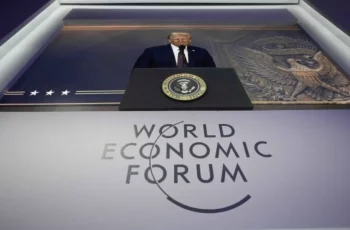
The recent shift in power in Syria raises questions about potential adjustments to the US sanctions regime targeting the country. For the past two decades, Syria has endured some of the most stringent sanctions imposed by Washington, which have included financial restrictions, extensive export controls, import bans, and limitations on transportation and visas. This political transition may create opportunities for the alleviation of sanctions, as the head of the Foreign Ministry of Syria’s transitional government has called on the US to lift these measures.
While there is a strong probability of easing some restrictions, the process is expected to be gradual. Legal frameworks governing unilateral US sanctions against Syria may persist for years, regardless of political changes.
A comprehensive list of US grievances against Syria was established in 2003 through the Syria Accountability and Lebanon Sovereignty Restoration Act (SAA). This list includes allegations of support for organizations deemed terrorist by the US, such as Hamas and Hezbollah (Syria was designated a state sponsor of terrorism by the US State Department in 1979); undermining Lebanon’s sovereignty (Syrian troops withdrew in 2005); and developing medium- and short-range missiles, alongside chemical and biological weapons. Following the SAA, President George W. Bush employed the International Emergency Economic Powers Act (IEEPA) to enact Executive Order 13338 on May 11, 2004, implementing various sanctions against Syria. These included bans on military and dual-use goods exports, restrictions on Syrian civil aviation, and blocking financial transactions with Syrian individuals linked to the government.
In 2005, Syria was included in the Iran Nonproliferation Act, which was later expanded to include North Korea. This version imposed sanctions against violations of dual-use export controls. Further sanctions were added over the years: in 2006, following the assassination of Lebanese Prime Minister Hariri (Executive Order 13399); in 2008, for corruption (Executive Order 13460); and in 2011, for human rights abuses and suppression of opposition (Executive Orders 13572, 13573).
Over time, the sanctions evolved, restricting US investments in Syria, banning exports and re-exports of services to Syria, and prohibiting transactions involving Syrian oil and petroleum products (Executive Order 13582). In 2012, new sanctions were introduced regarding digital surveillance of opposition groups and human rights violations (Executive Order 13606). Additionally, a legal mechanism was established to block financial transactions by third parties aiding in the evasion of sanctions against both Iran and Syria (Executive Order 13608). Finally, in 2019, the Caesar Syrian Nationals Protection Act was enacted, imposing restrictions on dealings with the Central Bank of Syria and creating new sanctions against third-country individuals cooperating with the Syrian regime.
The US has also sanctioned allied nations on issues related to Syria. For instance, in 2019, President Trump declared a state of emergency, enabling sanctions against individuals from Turkey and elsewhere who undermined Syria’s peace and stability (Executive Order 13894). Consequently, Syria has become subject to one of the strictest sanctions regimes enacted by the US, covering a wide range of critical industries, including energy, transport, finance, and technology.
The European Union, the UK, Canada, and other Western nations have also implemented their own sanctions against Syria.
In response to the sanctions, Damascus has actively sought to adapt by strengthening ties with Iran and Russia, both of which face their own sanctions from Washington and its allies.
Given the political changes in Syria, there are emerging conditions that could facilitate the easing of restrictions. One of the initial steps in this direction was the issuance of General License No. 24 by the Office of Foreign Assets Control of the US Treasury on January 6, 2025. This license permits certain transactions involving Syrian government entities related to energy and electricity, as well as personal, non-commercial money transfers. While these concessions are significant, they are temporary, valid only until July 7, 2025, and could be subject to political conditions for extension. Furthermore, this license does not eliminate the existing blocking sanctions or trade restrictions.
Formally, the US sanctions regime remains intact. It is anticipated that the US will continue to utilize temporary licensing while retaining the underlying legal frameworks. Significant changes to these sanctions are likely only if Washington perceives a substantial and irreversible shift in Syria’s political direction that aligns with its interests. Even in the context of major changes in Syria’s domestic or foreign policies, existing federal laws may remain unchanged for an extended period due to the complexity of repeal, although the president does possess the authority to suspend them.
Alongside general licenses, the US may consider gradually excluding specific Syrian government entities or businesses from sanction lists. This process is expected to be gradual, potentially contingent on the presence of American oversight and accountability measures.
Some relaxation of export controls may also be anticipated, particularly regarding non-dual-use goods and services. However, any potential sanction relief will likely be cautious and tied to the fulfillment of US political demands, with the possibility of quickly reinstating sanctions if those demands are not met. Sanctions will continue to serve as a significant tool for influencing the political direction of the new Syrian authorities.










Comments